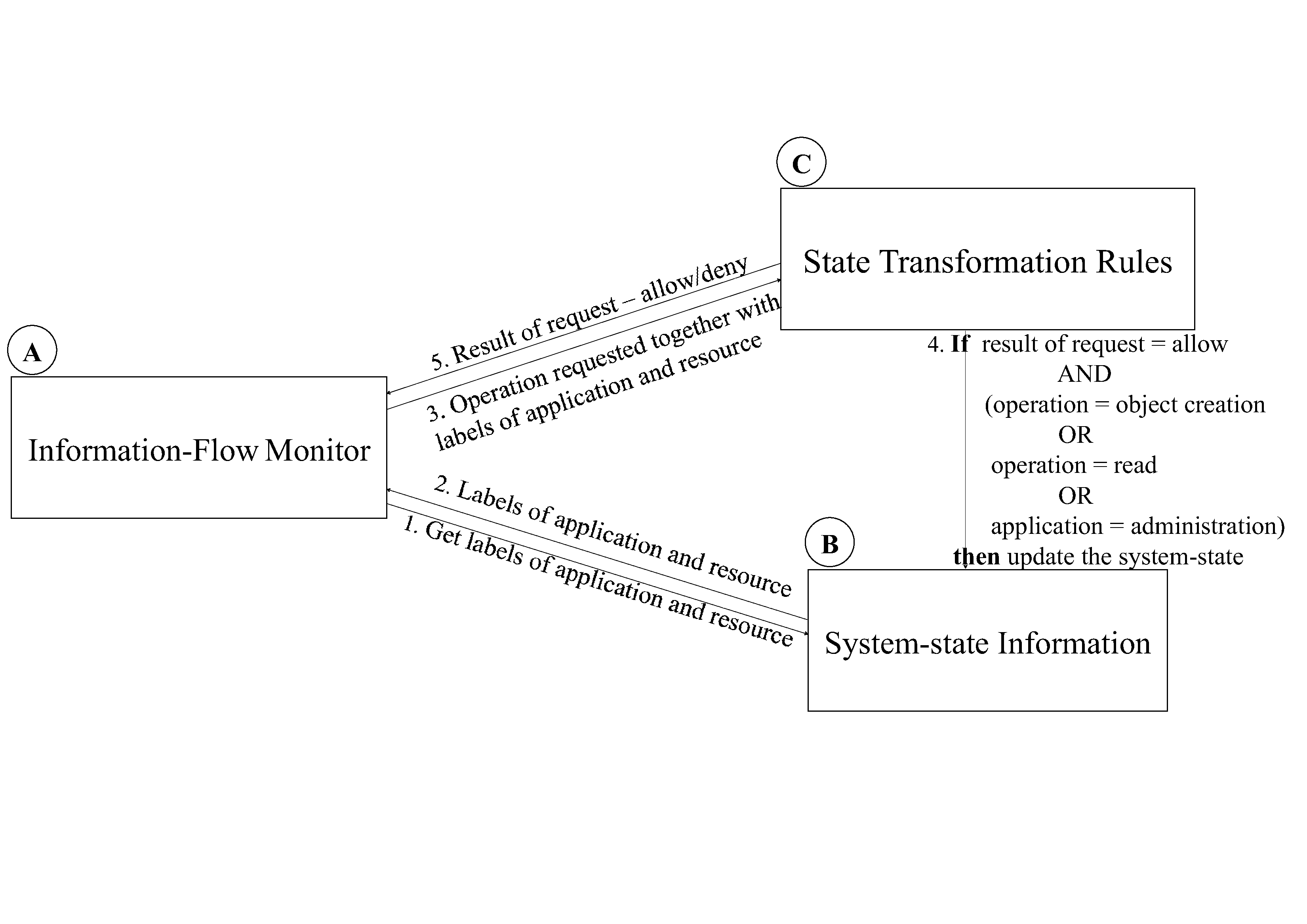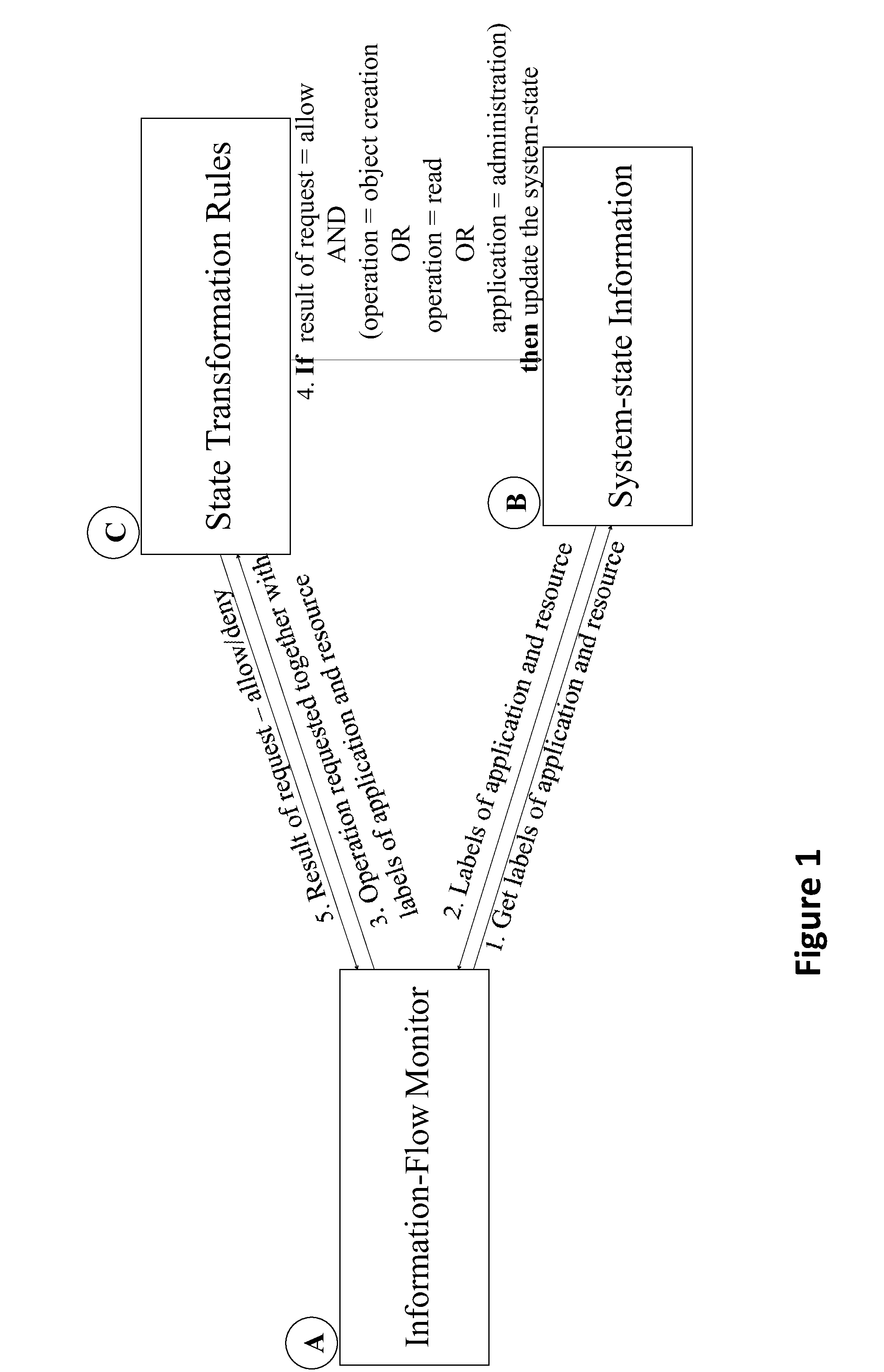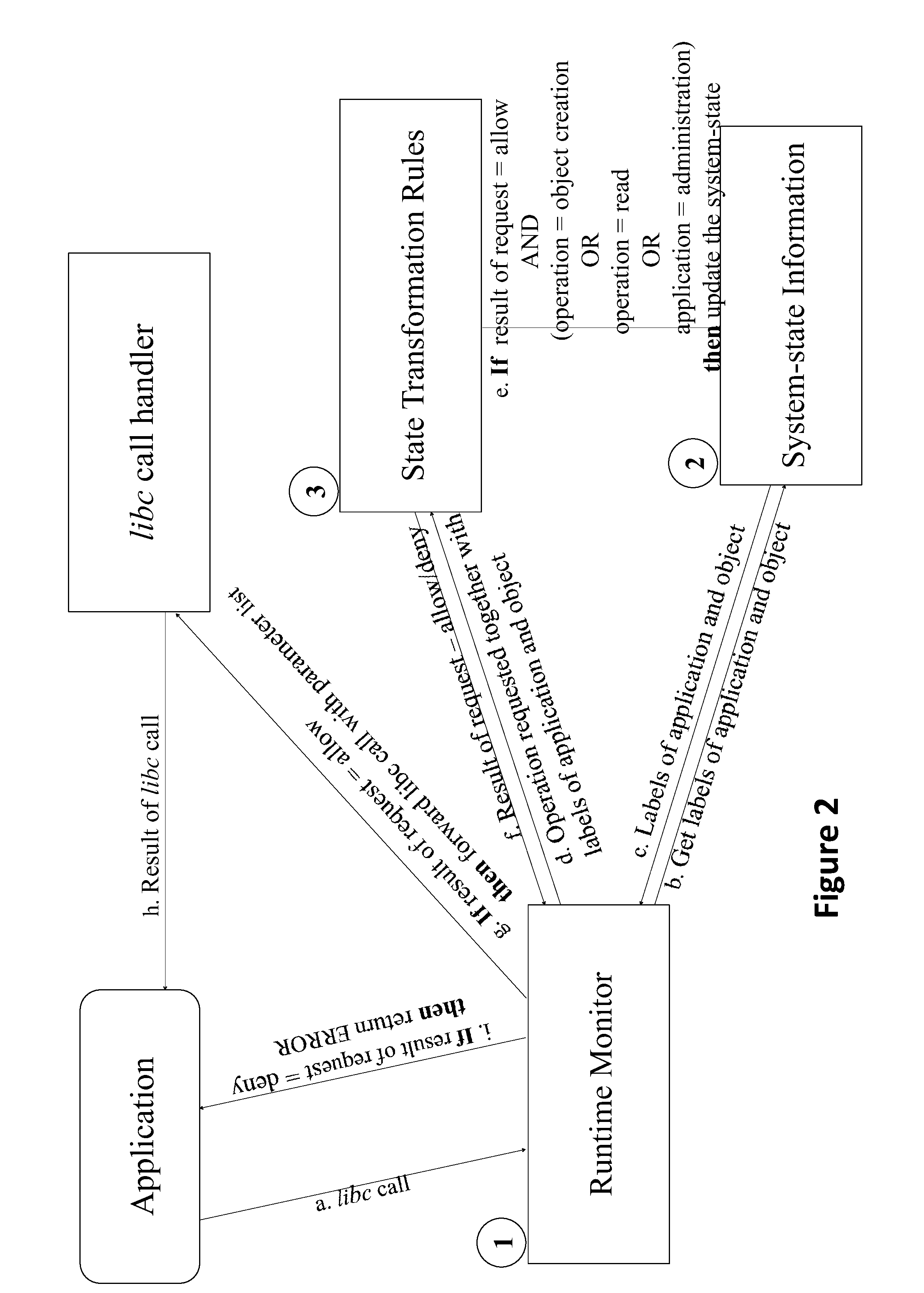Decentralized information flow securing method and system for multilevel security and privacy domains
- Summary
- Abstract
- Description
- Claims
- Application Information
AI Technical Summary
Benefits of technology
Problems solved by technology
Method used
Image
Examples
Embodiment Construction
[0030]A summary of the drawbacks of two prominent label models is presented in the table below, also indicating what would be desirable in the ideal scenario.
[0031]
DLMDCIdealConfidentialityonly Readersonly ReadersReaders andWritersIntegrityonly Writersonly WritersReaders andWritersDowngradingPurely Purely Consistent with(DAC)discretionarydiscretionaryIFC (MAC)OwnershipExplicitImplicitExplicitAuthorityOrthogonal to the Orthogonal to theExplicit in thelabellabellabelPrincipal hierarchyOrthogonal to theOrthogonal to the Embedded in and Delegationlabellabelthe labelBi-directional flowDifficultDifficultSimple andAccurateEase of useModerateModerateEasyLabel sizeModerate to LargeLargeSmallNo. of labelsLargeLargeSmall (as requiredby the application)
[0032]Thus, there has been a need for developing a label system and an information flow model for decentralized information flow control which will consider both the readers and writers of information for a proper tracking of any flow property an...
PUM
 Login to View More
Login to View More Abstract
Description
Claims
Application Information
 Login to View More
Login to View More - R&D
- Intellectual Property
- Life Sciences
- Materials
- Tech Scout
- Unparalleled Data Quality
- Higher Quality Content
- 60% Fewer Hallucinations
Browse by: Latest US Patents, China's latest patents, Technical Efficacy Thesaurus, Application Domain, Technology Topic, Popular Technical Reports.
© 2025 PatSnap. All rights reserved.Legal|Privacy policy|Modern Slavery Act Transparency Statement|Sitemap|About US| Contact US: help@patsnap.com



